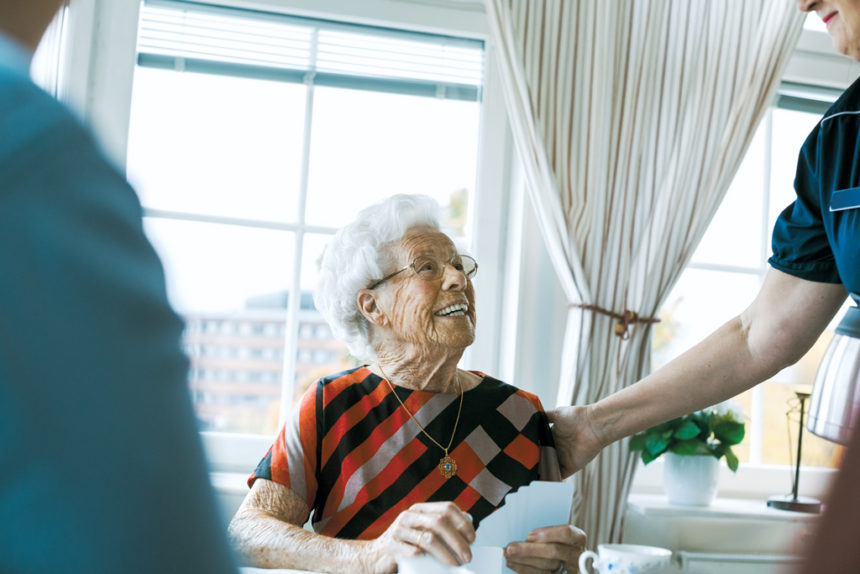
Some lines among skilled nursing facilities and assisted living, memory care and independent living communities have become blurred in the era of COVID-19, according to panelists at Wednesday’s Leadership Huddle of the National Investment Center for Seniors Housing & Care. Panelists discussed the trends that operators will be facing in the post pandemic world.
Skilled nursing used to be very different from the other types of long-term care, panelist Fee Stubblefield, founder and CEO of The Springs Living said, noting that “there was kind of this line where you cross over into healthcare … where we don’t want to know what’s on the other side of the line.”
Moderator Maria Nadelstumph, senior vice president of the Brandywine Center of Excellence for Brandywine Living, noted that all aspects of community-based facilities have met the same challenges throughout the pandemic.
“We all had to be part of the solution,” Stubblefield said. “We’ve all been thrown into this together because … we’ve had to evolve in areas like environmental infection control, how we deal with our workforce, how we communicate. Environmental systems are definitely here to stay.”
Technology changes also are part of the future, Stubblefield said. Telehealth has worked very well, he said, so it probably is here to stay, too.
With a younger generation of older adults starting to move in, their expectations are different from those of seniors 20 years ago, the speakers said. Members of this younger generation are not going to be satisfied with going to multiple medical appointments in several locations, for instance, Stubblefield said, adding that convenience matters.
“That healthcare support has to be latent,” he said.
“We need to be not in-your-face about it. We need it to be there when you want it,” Nadelstumph said. Working with partners is a way for operators to achieve a balance, she added.
Providers have found that lifestyle is an important component of senior living, especially when residents were isolated from the outside world during the past year. Given recent occupancy challenges, it’s important to create an environment where people really want to live, speakers said. Operators should strive to bring a “Disney World level of excitement” to prospective residents, Stubblefield said.
Another lesson from the pandemic is the significance of worker satisfaction, panelists said. In addition to improving the environment for residents, providers should pay attention to improving the work experience for the caregivers, Stubblefield said.
As the industry struggles to retain workers, providers will need to increase pay to compete with other markets, speakers said. “Labor is our raw materials. This is their time,” Stubblefield said. “The market must respond.”
It’s also important to create a sense of urgency to woo prospective caregivers, Nadelstumph said. “We need to make a dedicated effort,” she said.
In the past year, some communities and facilities have gained occupancy, whereas others have lost it. Those that gained it seemed to be good at communicating and implementing vague government guidelines, panelists said.
Moving forward, communication among operators is essential. “Inconsistency in regulation was a challenge,” Stubblefield said.




